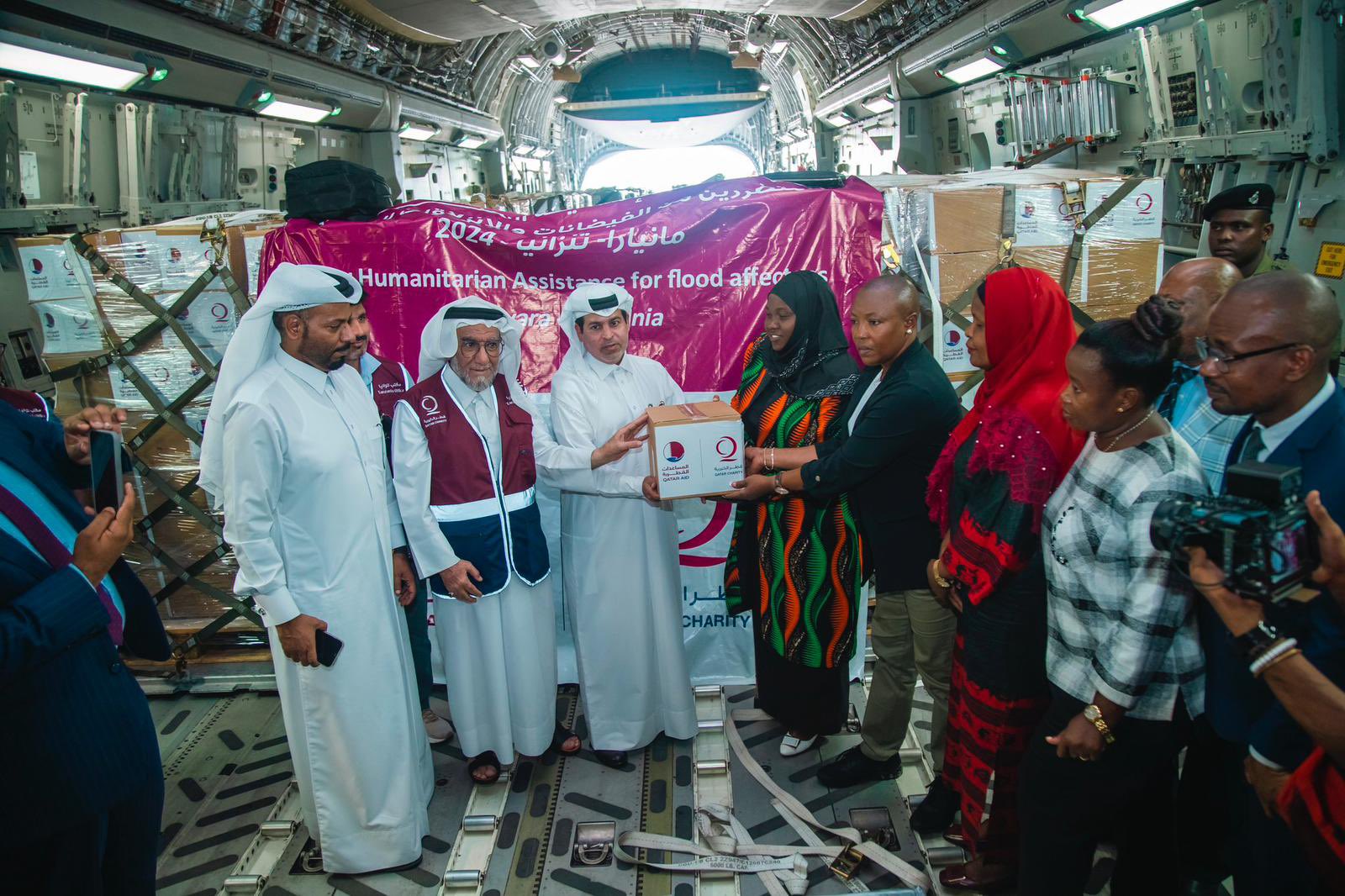Local weather forecasts predict that the rainfall will continue until March, requiring more humanitarian assistance for those in the affected areas.
Qatar dispatched the second aid flight for Tanzania’s flood victims on Wednesday, carrying 45 tonnes of assistance including food and medical supplies, Doha’s news agency (QNA) reported.
The latest aid delivery came just days after Qatar sent another flight on Monday that carried 49 tonnes of basic food and medical supplies provided by Qatar Charity.
“The assistance comes within the framework of the State of Qatar’s support for those affected by the floods and landslides in northern Tanzania,” QNA reported.
Tanzania has faced a humanitarian crisis since late 2023 following intense rainfall that triggered floods and mudslides in different parts of the country.
At least 89 people died between October and December as a result of the mudslides as 139 others sustained injuries, according to the International Federation of Red Cross and Red Crescent Societies’ update on February 14.
Assessments by IFRC found that the floods directly affected 5,600 people with the Hanang district being the hardest hit.
“The consequences extended beyond agriculture, disrupting and destroying crucial infrastructure such as roads, water points, electricity, and communication systems,” IFRC said last week.
The coastal city of Dar es Salaam has also been affected by the floods, where houses and bridges have been destroyed, the BBC reported on January 22.
“I have nothing left behind. I’ve even borrowed clothes from my neighbour,” Elinaike Shoo, a resident in the area, told the BBC at the time.
Tanzania’s President Samia Suluhu Hassan had to shorten her trip to the United Nations climate summit in Dubai, COP28, last December due to the floods in the northern part of her country.
During her participation, Hassan underlined the major impact of climate change on poorer countries.
“It must be said, unfulfilled commitments erode solidarity and trust and have detrimental and costly consequences for developing countries,” Hassan at the time.
“My own country is losing 2-to-3 percent of its GDP due to climate change,” she noted.
Local weather forecasts predict that the rainfall will continue until March, requiring more humanitarian assistance for those in the affected areas.
On February 16, Tanzania’s Prime Minister Kassim Majaliwa urged citizens to store enough food while directing the local Ministry of Works to carry out the necessary preparations for better road communications during such weather challenges.
Since October, the flooding has impacted millions in other East African countries including Ethiopia, Kenya, and Somalia.
The floods killed at least 154 people in Kenya while displacing nearly half a million, the Associated Press reported on December 7, 2023. The death toll in Somalia reached 110 while displacing more than one million people whereas 57 people died in Ethiopia.
“What we are witnessing in Kenya, Somalia, and Ethiopia is yet another devastating blow to an already fragile humanitarian situation,” said Melaku Yirga, regional director for Africa at the humanitarian organisation Mercy Corps said in December, as quoted by the AP.







